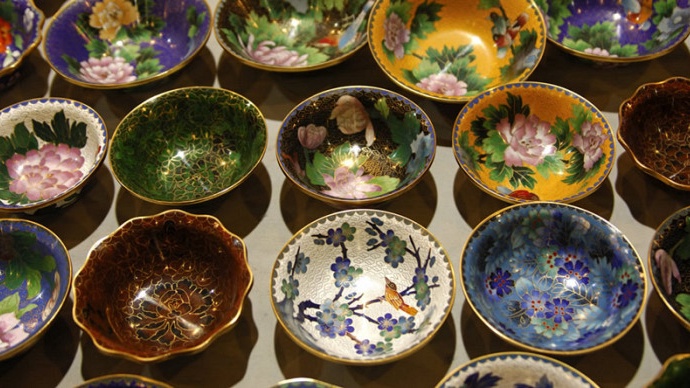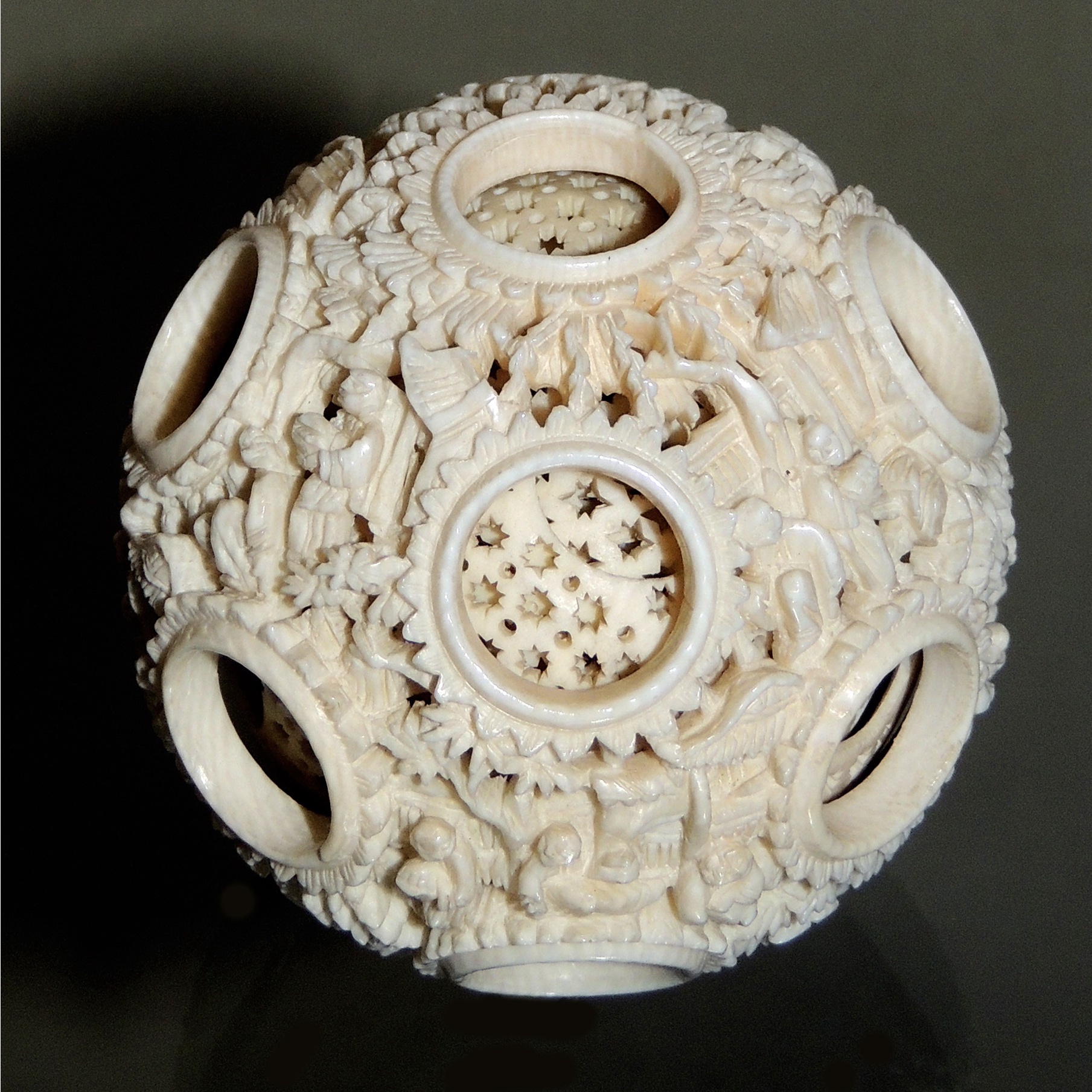Cloisonne, ivory carving, jade carving, and carved lacquerware are recognized as one of the four great forms of craftsmanship in Beijing.
Cloisonne
Cloisonne, short for fetal copper filigree enamel, is a representative of Beijing handicrafts. The major manufacturing flow of cloisonne includes body making, wire inlay, applying the enamel, firing, polishing, and gold plating, together some one hundred small processes.

First, craftsmen make the body of utensils with copper; then they shape fine brass wires into patterns and weld them into the body, the so-called wire inlay; then they apply enamel glaze of different colors into the patterns, called applying the enamel; then they put the work into furnace, called firing. Applying the enamel and firing have to be repeated three times. At last, utensils have to be polished, and brass wires that shape the patterns have to be gilded so as to make them shinier. Cloisonne won the favor of imperial family for its magnificence and gorgeousness. Actually, cloisonne can be found in many palaces of the Forbidden City.
Where to buy: Cloisonne Art Museum.
Address: Within the Beijing Enamel Factory Co., Ltd, No. 10, Anlelin Road, Yongdingmen Outer Street, Dongcheng District, Beijing
Ivory Carving

Beijing enjoys a long tradition of ivory carving, as indicated by the ivory comb unearthed in graves of the Warring States period in Huangtupo Village. Thanks to long practice, the craftsmanship of ivory carving in Beijing is improving. As part of the efforts to protect the ecology, China became a signatory of the Convention on International Trade in Endangered Species of Wild Fauna and Flora in 1980s, which prohibits trade in ivory. Now ivory carving factories have to use inventory ivory, which means craftsmen treasure these materials all the more.
Where to buy: Gongmei Building, Wangfujing
Address: No. 200, Wangfujing Avenue, Dongcheng District, Beijing
Jade Carvings

Jade wares are normally called “Jade carvings”, a form of craftsmanship that enjoys a long history. Jade wares feature fine craftsmanship, and solemn, magnificent manner. Most jade wares come in large sizes and are used for decoration. Jade carvings with the theme of persons, mountains, utensils, and flowers bear unique touch. Quality materials are chosen to carve into different shapes and themes while allowing for features of the materials themselves. The agate ware which subtly retains the original color of it is the most representative. A wide range of jade materials are used to shape jade wares revealing a rich variety of themes. Jade wares betray palace art features and imperial manner.
Where to buy: Wangfujing Gongmei Building
Address: No. 200 Wangfujing Avenue, Dongcheng District, Beijing
Carved Lacquerware
On par with cloisonne, ivory carving, and jade carving, carved lacquerware is recognized as one of the four great forms of craftsmanship in Beijing. Carved Lacquerware in Beijing features plain, solemn shape, delicate ornamentation, smooth color and lustre, and elegant appearance. It is also moisture-proof, heat resistant, acid and alkali resistant, and not deteriorating, together with the property of undeformable. Carved Lacquerware constitutes an important part of Chinese lacquering technology, as well as the essence of traditional arts and crafts in Beijing. It mirrors the superb craftsmanship and wisdom of craft artists in China, and exists as the treasure of Chinese traditional handicraft.
Where to buy: Gongmei Building, Wangfujing
Address: No. 200, Wangfujing Avenue, Dongcheng District, Beijing



